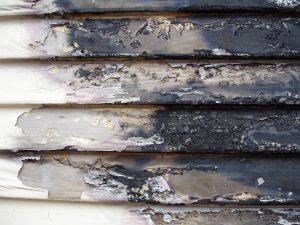 |
The traditional and most time-tested property insurance policy offers coverage for fire and a few other specifically named perils. Standard fire policies are commonly known as the “165-line policy” because of the standard form (format and language) used to offer property insurance in most states. These policy forms are not complete, they require additional forms and endorsements to be added in order to cover boarder coverage for other direct and indirect risks.
Homeowner policies typically start in with the Standard Fire Policy as a base for coverage insurance companies often combine coverage to create more complete package policies such as a Homeowners policy with additional coverage such as personal liability or an endorsement for earthquake loss. Some perils such as Flood may require a completely separate policy to be issued.
A standard fire policy usually addresses the coverage for buildings including the foundations. Landlords often insure the building structure with Standard Fire coverage, because the structure rented is insured but, not personal property of a renter.
A Standard Fire Policy has four sections. Most policy holders insuring property will notice that each policy for insurance is typically broken down to the same basic format:
- Part 1. Policy Declarations: Offer a full description and location of property, the insured amount of the property, and the name of insured.
- Part 2. Policy Agreements: Establishes the premium amount, and outlines the responsibilities for the insured policy holder. Typically the actions insureds need to take when a loss occurs are spelled out and information about claim reporting is included.
- Part 3. Policy Conditions: This section of an insurance policy describes the things or issues that will suspend or restricts the insurance coverage. It may include language that holds the policy holder or insured responsible for reporting an increase in a hazard to the insurance company for example. Or outline the requirements of an insured to Mitigate losses in the event of a loss caused by a named peril.
- Part 4. Policy Exclusions: This section of a policy usually outlines the perils that will not be covered under the policy. For example broken pipes may be covered but natural flood will be excluded.
The Standard Fire Policy forms are usually added to in order to create a package policy such as homeowners. The Standard form may have some added specifically named perils. Endorsements outline a risk or define a peril and are generally added to the Standard form.
We have a standard fire policy for our rental homes. We insure the building, additional structures for all the common perils such as fire, windstorm and lightning. But, we also have other endorsements which extend our personal liability coverage in the event we should be found negligent. As We also have added coverage for the loss of rent we might face it there were situation we lost rent due to a named peril. We don’t pay insurance premiums to protect our renters personal property our liability coverage would provide us protection if there were a situation that our negligence caused a fire and our renter lost personal property but, otherwise our renter is responsible to purchase their own insurance coverage to protect their personal property and liability exposures.
The Standard Policy will cover specific named-perils that will be spelled out in the policy. Some examples of standard insurance policies for named perils might include specific named risks such as:
- Fire.
- Explosion and or Implosion, however, most policies have an exclusion for explosion/implosion of boilers, economizers and other vessels, machinery or apparatus that generates steam.
- A direct strike of Lightning.
Some standard policies will cover several named perils others my only cover one, such as a Flood Insurance policy. As an insurance consumer it’s important to decide what risks we have and which perils we want to insure.
Photo credit for this blog entry:  (no use restrictions for this photo)
(no use restrictions for this photo)
![]() Related Blogs
Related Blogs
Glossary of Insurance Terms:
A | B | C | D | E | F | G | H | I | J-K | L | M | N | O | P | Q-R | S | T | U-V | W-Z
Families.com Blogs are for informational purposes only. Families.com assumes no responsibility for consumer choices. Consumers are reminded that it is their responsibility to research their choices properly and speak to a certified insurance professional prior to making any decision as important as an insurance purchase.

